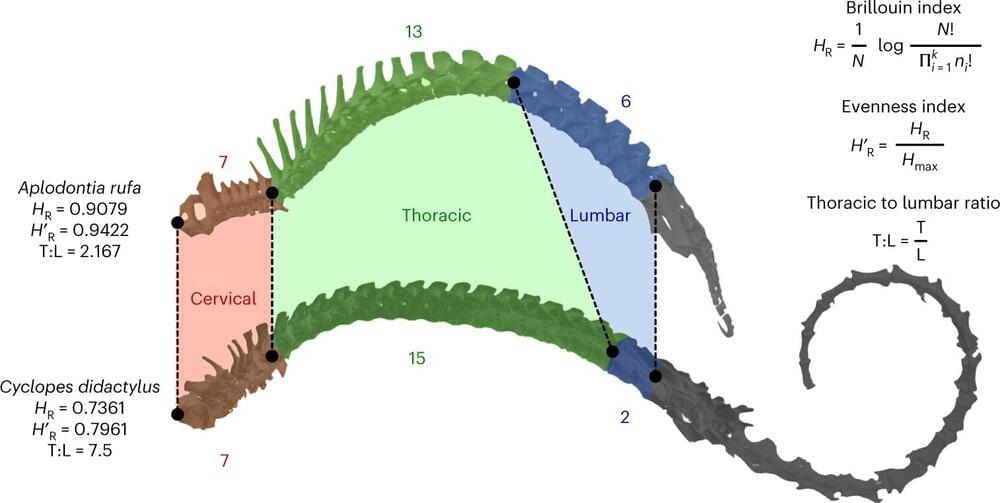Major changes in the spinal columns of mammals have been shaped by their highly variable numbers of vertebrae, according to new evidence from a team of international scientists, including researchers from the Milner Center for Evolution at the University of Bath.
The team unearthed new findings that identify how this column “complexity” in mammals has been shaped by their varying numbers of vertebrae.
The research group from the University of Lincoln, U.K., the University of Bath and Nanjing Institute of Geology and Paleontology, China, conducted a case study that examined the vertebrae of 1,136 modern mammal species, ranging from blue whales to shrews, to determine how column complexity evolved within major groups over time.





